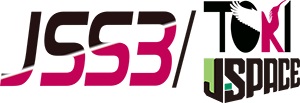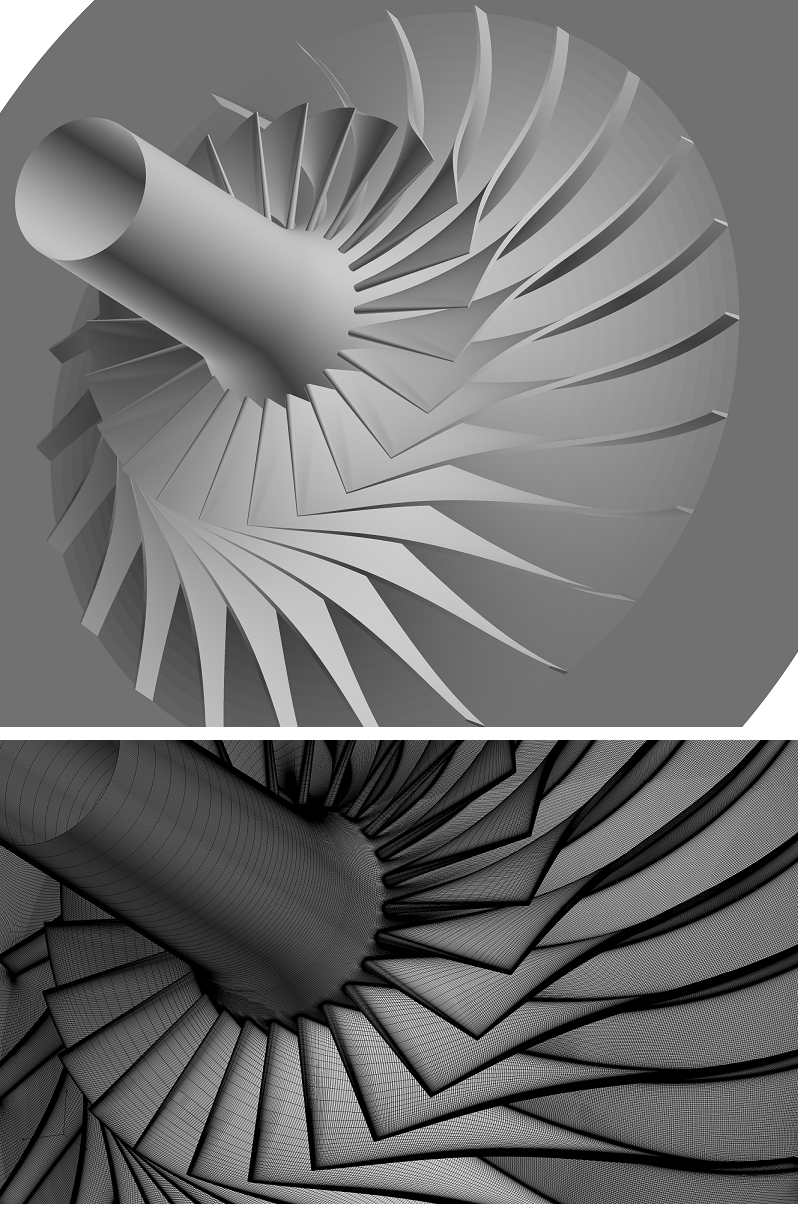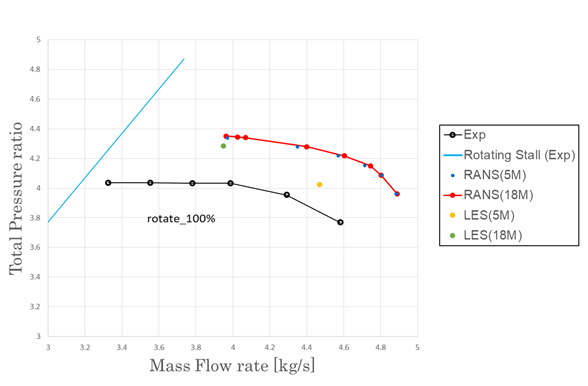Improvement of simulation of internal flow of turbomachine
JAXA Supercomputer System Annual Report April 2017-March 2018
Report Number: R17EA2111
Subject Category: Aeronautical Technology
- Responsible Representative: Takashi Yamane, Propulsion Research Unit, Aeronautical Technology Directorate
- Contact Information: Junichi Kazawa kazawa.junichi@jaxa.jp
- Members: Junichi Kazawa, Takahiro Kawahara
Abstract
In the turbomachine internal flow, the separation on the blade surface and the behavior of the vortex have a large influence on the aerodynamic performance. In numerical analysis using RANS, it is difficult to simulate the separation and vortex in detail, so we analyze using LES for predicting highly accurate aerodynamic performance, and improve accuracy of aerodynamic performance prediction.
Reference URL
N/A
Reasons for using JSS2
Since the mesh required for LES analyses becomes large scale, supercomputers are necessary.
Achievements of the Year
Numerical calculations by UPACS developed by JAXA were performed on a vaneless diffuser centrifugal compressor (Krain, 1988) in which the geometry and measurement results (performance curve, static pressure distribution on the wall surface, L2F in the cross section of the flow passage) are published. Computation by RANS and LES at two or more operating points is performed for two kinds of mesh, coarse (5 M points) and fine (18 M points), with imposing a periodic boundary condition in the circumferential direction. In the numerical prediction of the performance curve, the loss tends to be lower than the experimental value and the estimation performance tends to be overestimated compared with the experimental data. But in general aprediction results by LES are closer to the experiment data than the RANS.It is suggested that LES captures the generation and loss of vortices more accurately than RANS. On the other hand, the numerical prediction result overestimates the performance even in LES on the high rotating speed and high pressure ratio side. It is a future task to clarify the cause as a result.
Fig.3(video): Entropy distribution (animation)
Publications
N/A
Usage of JSS2
Computational Information
- Process Parallelization Methods: MPI
- Thread Parallelization Methods: OpenMP
- Number of Processes: 51 – 58
- Elapsed Time per Case: 165.00 hours
Resources Used
Fraction of Usage in Total Resources*1(%): 0.13
Details
Please refer to System Configuration of JSS2 for the system configuration and major specifications of JSS2.
| System Name | Amount of Core Time(core x hours) | Fraction of Usage*2(%) |
|---|---|---|
| SORA-MA | 0.00 | 0.00 |
| SORA-PP | 199,682.19 | 2.50 |
| SORA-LM | 0.00 | 0.00 |
| SORA-TPP | 0.00 | 0.00 |
| File System Name | Storage Assigned(GiB) | Fraction of Usage*2(%) |
|---|---|---|
| /home | 010.22 | 0.01 |
| /data | 960.49 | 0.02 |
| /ltmp | 2,092.63 | 0.16 |
| Archiver Name | Storage Used(TiB) | Fraction of Usage*2(%) |
|---|---|---|
| J-SPACE | 0.00 | 0.00 |
*1: Fraction of Usage in Total Resources: Weighted average of three resource types (Computing, File System, and Archiver).
*2: Fraction of Usage:Percentage of usage relative to each resource used in one year.
JAXA Supercomputer System Annual Report April 2017-March 2018




